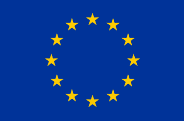
Safe non-food consumer Products in the EU and China
‘Childcare articles’ is used to refer to a wide range of product types, from prams and pushchairs to soothers and from baby bouncers to drinking equipment
‘Children’s clothing’ means clothing specifically intended to be worn by children under the age of 14 years.
Children are vulnerable consumers, therefore, the protection of their health and safety is of utmost importance. Examples of common risks are set out below, however, manufacturers must carry out an assessment of the product that covers all relevant risks that may be associated with it and take actions to mitigate these where possible.
Specific examples of measures taken against dangerous childcare articles and children’s clothing offered for sale in the European Union are available on the Safety Gate website.
In relation to childcare articles and children’s clothing, the main EU legislation is the General Product Safety Directive also known as the GPSD.
There are no product specific laws covering childcare articles and children’s clothing and, therefore, they are covered by the GPSD.
GPSD requires all products to be safe and is broken down into 3 key areas regarding safety and risk that can assist manufacturers of childcare articles and children’s clothing to ensure that only safe products are manufactured:

This website was created and maintained with the financial support of the European Union. Its contents are the sole responsibility of SPEAC project and do not necessarily reflect the views of the European Union.